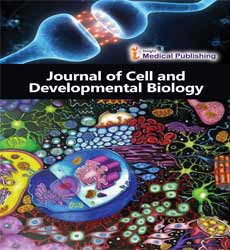LIM1-The novel marker to treatment the endometrial cancer
Abstract
Statement of the problem: In recent years, the number of patients with endometrial cancer: EC has been increasing at all ages, from the relatively young in their 40s and 50s to the elderly. In particular, effective treatments are limited in Type 1 (estrogen-dependent) advanced EC, such as recurrent or metastatic cancer. Method: We independently reanalyzed and compared the gene profiles of stage1 (255 cases) and non-stage 1(110 cases) EC patients RNA-seq data, published by TCGA (The Cancer Genome Atlas). Then, GO (Gene Ontology) enrichment analysis was performed on the genes that were upregulated in non-stage 1 EC. Then, we generated LIM1(LHX1; LIM Homeobox 1)transient knock down HEC50B cell line mediated by siRNA, and evaluated cell proliferation, migration, invasion ability in vitro. Also we generated the same cell line with lentivirus-mediated LIM1 knocked down and evaluated cell proliferation ability in vivo. Findings: We identified LIM HOMEOBOX 1 (LIM1) as a norvel marker comparing between stage 1 and stages 2 to 4.Kaplan-meier analysis of TCGA data sets suggested that patients who have high LIM1 expression had significantly shorter overall survival for 5 years. LIM1 transient knockdown exhibited significantly reduced cell proliferation, migration, invasion ability in vitro. Also, LIM1 stable knocked down cell line showed a clear decrease in cell proliferation in vivo. The RNA sequences of LIM1 knockdown cell lines were analyzed using Ingenuity Pathway Analysis (IPA), suggesting that the CREB signaling pathway may determine the tumor grade. This is the first report of the association between LIM1 and EC grade and the molecular mechanisms targeted by LIM1 in EC.
Open Access Journals
- Aquaculture & Veterinary Science
- Chemistry & Chemical Sciences
- Clinical Sciences
- Engineering
- General Science
- Genetics & Molecular Biology
- Health Care & Nursing
- Immunology & Microbiology
- Materials Science
- Mathematics & Physics
- Medical Sciences
- Neurology & Psychiatry
- Oncology & Cancer Science
- Pharmaceutical Sciences
